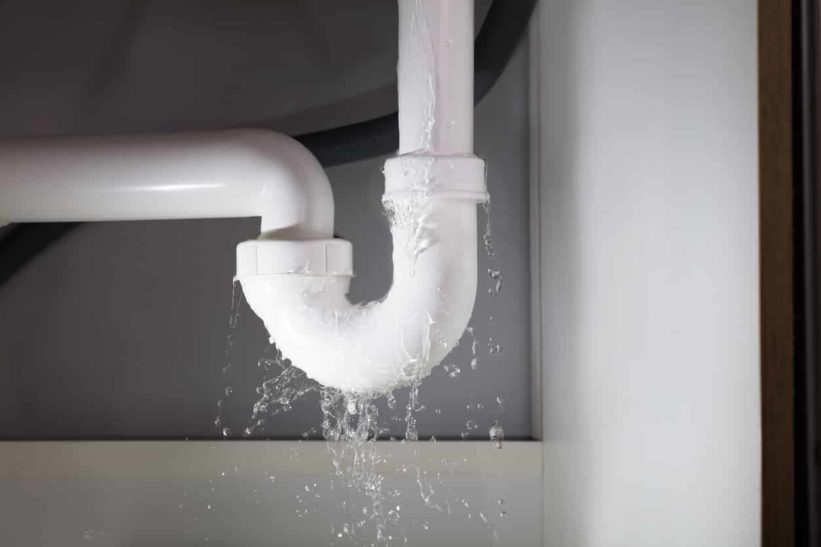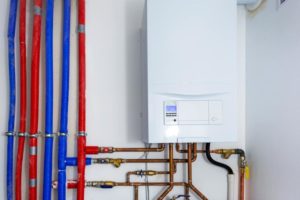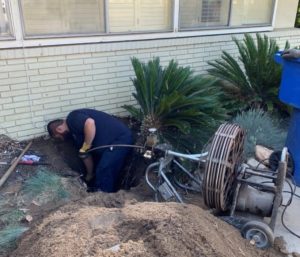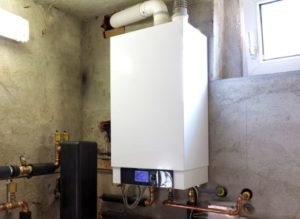Leaking pipes are a major issue. They can cause severe damage to your home, ruining ceilings, floors, walls, carpets, furniture, and more. The moisture can encourage the growth of mold and mildew. All of these problems can then result in some rather expensive repair bills. Not only that, but leaky pipes also waste water, which means you’re paying a whole lot more on your water bill for the water you’re not even using. One of the most significant issues with leaks is that you can’t see the pipes in your home, so you might not even know that one has developed. Understanding the most common causes, however, can enable you to contact a plumber and prevent future issues.
Old Pipes
Pipes can last a while, but they’re not meant to last forever. Older pipes are made from materials that are much more prone to corrosion, such as iron. When corrosion occurs, the pipe weakens and begins to break down. This can eventually result in a leak. If you have older pipes, it may be recommended to upgrade to newer ones. Newer pipes are generally made from copper or plastic, which is resistant to corrosion. While copper pipes won’t last forever either, at least you won’t have to worry about corrosion being the problem that damages them.
A Tree Root Has Intruded
Leaks can begin outside of the home just as quickly as they can begin inside. One of the most common causes of a leak that starts outdoors is an intruding tree root. While the root of the tree in your yard might not have been an issue when the pipes were first laid, they may gradually make their way over as the tree continues to grow. If the root intrudes and damages the pipe, the water can then leak out into the dirt. A dip in water pressure is a common indicator of a leak. If you notice this dip along with a wet patch in your yard (and there’s a tree nearby), it could very well mean that the root of the tree has damaged the pipe.
Broken or Damaged Seals
Seals appear in a few different places around your plumbing. Anywhere your pipes connect to faucets or other fixtures, rubber seals should have been placed around them. These seals are meant to keep the connection watertight. The problem, however, is that rubber seals aren’t made to last forever. Over time, they can wear out. They can get damaged and break. When the seals are damaged or broken, this breaks the watertight seal. As a result, water can get out. Water or condensation near a fixture could be indicative that there’s a loose, damaged, or broken seal.
Corrosion
Over time, pipes can develop corrosion, such as rust. Corrosion is a chemical reaction between the metal and the substances in the environment. In the case of your pipes, it is what is found in your water that can cause the corrosion to occur. Corrosion eats away at your metal pipes, causing them to weaken. Corrosion can also eventually create holes, which then allow water to escape. If you have pipes that were laid several years ago, they might be at a higher risk of corrosion than newer pipes. Corrosion can also happen because the pH of the water or the water’s mineral content is off.
There’s a Clog
Clogs are often seen as nothing more than an annoyance. While this may be true, they can also be the cause of a leaky pipe. When a clog goes untreated, pressure can build up behind it. This pressure can be too much for a pipe, causing it to crack or break. Some types of clogs can also have corrosive substances in them, such as a cleaner, which can expedite damage to the pipe and eat through the metal. If you develop a clog in any pipe in your home, it’s essential to address it as soon as possible.
Too Much Water Pressure
Having strong water pressure might feel nice in a shower, but too much water pressure can be rather damaging for your pipes. The more forcefully the water moves through your pipes, the higher the risk of damage. In severe cases, very strong water pressure can cause a pipe to burst. In situations where the water pressure is off by just a bit, you might only notice things such as the occasional leak at the fixture right as the water is shut off.
Damaged Joints
The joints are typically the weakest areas of your pipes. They are the curved parts of the pipes that cause the water to change direction so that it can get to where it needs to go. In some cases, the joints can weaken over time, which can then allow a leak to form. The first sign that there’s an issue with the joints is strange noises when the water, more specifically the hot water, is running. You might hear a clacking or banging sound in the pipes.
The Pipes are Laid Improperly
Many leaks develop because the pipes were laid incorrectly. When it comes to laying pipes, the job should be done by a licensed professional. Pipes and connectors have to be laid correctly. Backflow devices should be used as necessary. If your pipes haven’t been installed correctly, you could be left with a serious plumbing problem as well as a lot of water damage to your home. The next thing you know, you’re paying to have the pipes fixed, and you’re paying other expensive repair bills. If you are unsure of whether or not your pipes were laid correctly, a professional plumber can evaluate them for you.
Cracks in a Fixture
Sometimes cracks in your fixtures happen. Someone might have tripped and caught the fixture in the process. A ball may have been thrown in your home that hit the sink faucet. Or, perhaps you shove something repeatedly underneath the sink without realizing that you’re hitting the pipe. Cracks in faucets are generally noticeable immediately. You’ll see the crack from where the water leaks through. For cracked fixtures under the sink, you might not notice it right away until you find that the area underneath is damp.
The Pipes Have Shifted
Shifting happens. There could be an issue with your foundation or settling may have occurred. There may have been erosion, a flood, or tremors from an earthquake. When your home shifts, the pipes shift too. When this happens, the connections can break. Changes in your plumbing can indicate shifting, particularly after a flood or major storm. You might notice the water pressure has changed or that the watercolor has changed. These issues can mean that there’s a leak in your pipes that should be addressed right away.
Temperature Fluctuations
Temperature fluctuations can cause your pipes to expand or contract. When these fluctuations occur rapidly, expansion and contraction can damage the pipes. This is a particularly common issue in the freezing temperatures of winter. If the damage leads to the formation of a crack, then a leak can develop. This can be an issue with older pipes as well as newer ones. Any pipes made from metal are susceptible.
Final Thoughts
No one wants to deal with a leaky pipe. Dealing with it as soon as you notice it, however, will help to save your property and your wallet. If you see any signs of a leak, such as a dripping faucet, an increase in your water bill, or a musty smell, it is vital to call a plumber to get the issue taken care of as soon as possible.




